Currently, more and more Web3 dApps are being built on Ethereum. However, projects on Ethereum have always had an inherent weakness from the blockchain: high gas fees and slow transaction processing. This forces developers to switch to other layer 1 blockchains (BinanceSmartChain, Solana, Polkadot, etc.) if they want to reach more users. From here, it is clear that the future of Web3 will be towards the extension of multi-chain matching.
Biconomy was born to solve this problem, to simplify the Web3 experience and help to drive mass adoption of dApps.
Overview
Biconomy is a multi-chain, plug-and-play protocol. The project is built to solve gas problems, bridges, and transaction management.
To drive mass adoption, $BICO offers DeFI, NFT, and Gaming developers the following features:
- Plug-and-play API (simple programming interface, plug and play) and SDKs (software development kit)
- No transaction gas fees
- Support to pay for multiple tokens on different platforms
- A simple user interface, easy to use
- Multi-chain transactions
How Biconomy works
To explain, for the user to execute an order, the information will be transferred to the Biconomy blockchain to determine whether the executor is ready to work and select that executor to process the transaction.
The executor will then forward this transaction to the destination blockchain to add the new block to the chain.
At the same time, after the transaction is processed, the system validator will check the transaction and similarly place this block in the Biconomy blockchain.
With this way of working, Biconomy allows users to create a transaction on the blockchain and have a 3rd party pay for this fee as part of the cost of switching users.
Present and Future
The Biconomy Ecosystem is growing rapidly. More than 35 DApps are using BICO's multi-chain mechanism. Some of these and well-known projects are CurveFinance.
Biconomy achieved many great successes in the last year. The project's roadmap also shows a lot of plans for 2022. Biconomy EIP 4337 is also one of them.
Account Abstraction
Before understanding Account Abstraction, we need to have an overview of how accounts on Ethereum currently work. There are two types of accounts on Ethereum:
- Contract Accounts (CA) - (smart contract) controlled by code deployed on EVM (Ethereum Virtual Machine).
- Externally Owned Accounts (EOA) - user accounts (blockchain addresses) controlled by a unique Public Key and Private Key pair.
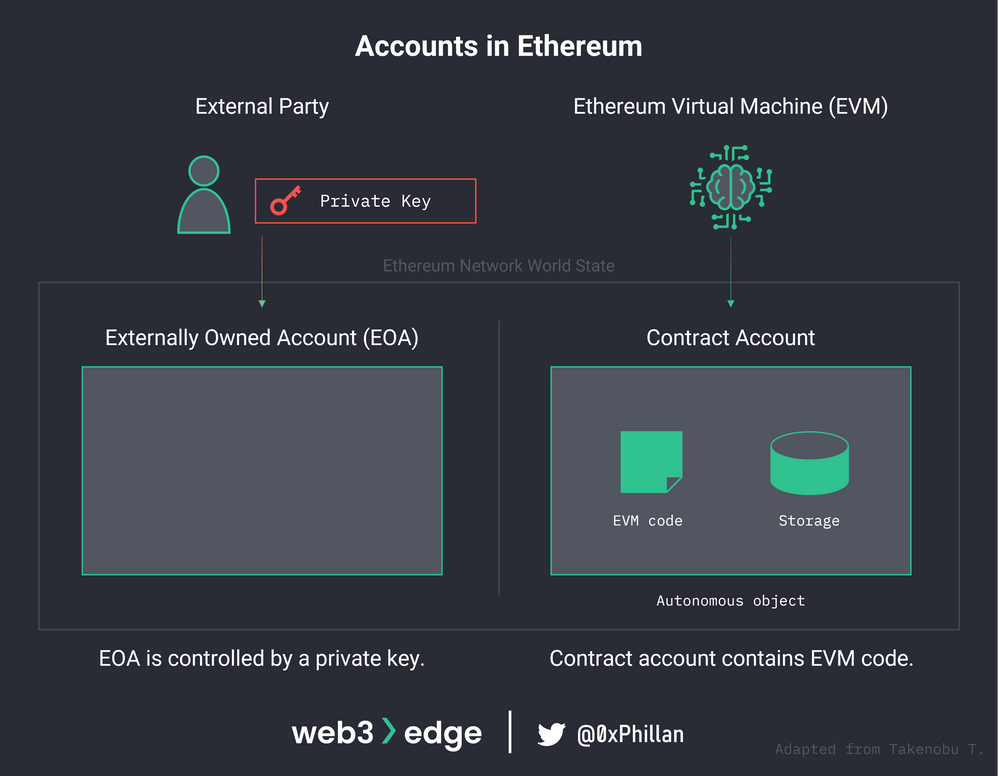
Users will be directly exposed to EOAs, when a transaction is made by EVM, EOAs will be the first to be deployed and users need to pay a transaction fee for the order to be executed - Most wallets on Ethereum are Externally Owned Accounts and Metamask is an example. EOAs consist of three main parts:
- A balance sheet showing the amount of ETH in the account
- A nounce ensures a transaction is unique
- A unique address that identifies an account on the system
Implementation process
- Every account on Ethereum is associated with a pair of encryption keys – a Private Key and a Public Key called the Singer. Imagine that before performing a transaction, you must sign a confirmation on a crypto wallet and this signature corresponds to your own wallet's private key.
- Next, upon receipt of the transaction information and signature, EVM will verify that the signature is valid for the target account, execute the transaction, and deduct the transaction fee from the account balance.
So what is the problem here?
First, the Private Key is tied to each wallet address and takes full control of that wallet. This can lead to the following cases:
- To recover a wallet address, a Private Key is a required and unique condition. If unfortunately the user does not back up this key, it is considered to have lost the wallet completely. Not only that, if a person knows your Private Key, they have full ownership of your wallet as well as the number of assets stored. Hundreds of millions of dollars, if not billions, have been lost or stolen through loss or theft of a Private Key.
Second, each transaction needs to go through many steps such as:
- Swap on DEX: 3 transactions (txns) - 2 Accept tokens + 1 Swap
- Provide DEX liquidity: 3 transactions (txns) – 2 Accept tokens + 1 Add liquidity (Add liquidity)
- Stake: 2 transactions (txns) – 1 Accept tokens + 1 Stake
⇒ Quite cumbersome and boring. Not only that, users are forced to pay transaction gas fees with native tokens of the blockchain, such as ETH on Etherem, BNB on BSC, etc. ⇒ Not flexible.
Solution Account Abstraction
In computer technology, abstract refers to extracting relevant parts from a large part, breaking something into smaller parts.
In Ethereum, accounts abstraction refers to the separation of transaction validation and transaction execution from a single monolithic process into components that can be tailored as required and user's own needs.
Account Abstraction allows the development of dApps that can be used by anyone without sacrificing supervision. It facilitates scalability to billions of users with fast and cheap transactions (or transactions that cost no gas) while providing an unparalleled user experience that creates a user experience.
- Social Recovery
In web2, if you forget your account password, you can go through a centralized organization such as a bank to recover (closer, like when you forgot your Facebook password, you still have many options to recover).
As for blockchain, performing a social rollback of a wallet allows a majority of authorized custodians to cooperate with each other and manage a user's wallet's Private Key. Guardians can be added or removed via the Private Key in the early stages. This eliminates the complete and hardest dependence on the Private Key but still ensures a high level of security as well as flexibility.
The mechanisms for this may vary. Users can choose recovery methods based on trusted contacts, hardware wallets or even third-party services. Or a combination of all of them.
Importantly, Social Recovery does not compromise control of your assets. You still control your assets. And for extra protection, you can adjust the delay to give you a chance to cancel the rollback if you want.
- Multicall for 1 tap crypto
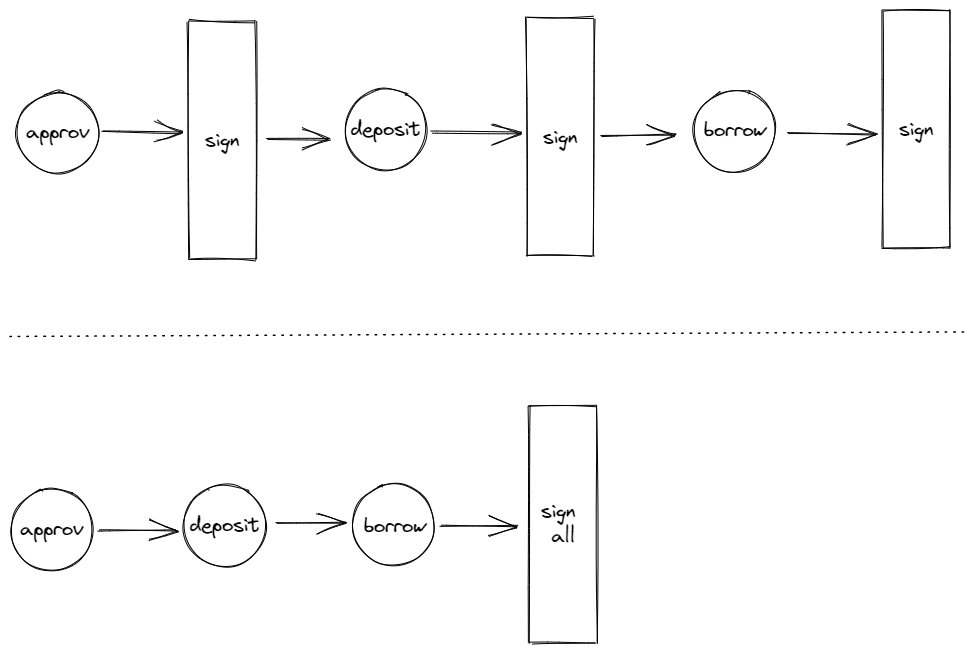
As mentioned above, when using a dApp, users are forced to go through a lot of steps that are time-consuming, troublesome and have high gas fees. With Account Abstraction, you can group multiple transactions into one and perform a sequence of operations in a single transaction. This feature is called multicall.
The benefits of Account Abstraction are much broader than just consolidating three transactions into one. Account Abstraction can completely simplify more complex processes into a one-touch experience for users.
- Session Keys
Session locking is a breakthrough for user experience (UX), especially blockchain games. They allow you to pre-approve the rules of interaction with the Dapp, and you can use it multiple times without having to sign every transaction.
For example, you preset an impactable Dapp asset ratio - a high rate for reputable research projects and a low rate for lottery investments. And every time you come to a project in these two categories, bring a suitable set of rules and use them throughout instead of having to constantly repeat the custom operation.
In other words, you can enjoy using Dapps knowing your assets are protected because you've limited what Dapps can and can't do with them. This means maximizing ease of use, while minimizing risk.
A specific case is the Play - to - Earn model. In-game assets are an important part of a market. For P2E games, the main business is creating gaming experiences.
The private key controls the assets in your wallet. If you're in a tight match, it's annoying when you have to confirm each transaction to use your item. Because of this, Account Abstraction allows builders to develop pre-rules for depositing and withdrawing items when accessing an on-chain game environment.
- Multiple authentication factors
Two or more users can be deployed to approve a single transaction for improved security. In addition, emergency account suspension can be implemented to lock the account or disable access from an unknown address.
Transaction limits can be set to prevent human errors, similar to traditional bank accounts or payment apps, from being exhausted by bad actors. Users can specify remittances to known addresses to prevent phishing attacks.
- Plug-ins - add functionality
Plug-ins make an account more flexible as third-party developers can build in new functionality tailored to their organization when creating their account. Besides, users can also add or remove functions after the account is created. For example game plug-ins, session secret keys, etc.
- Flexible and economical gas fee payment
Instead of having to use the native token of each interacting blockchain as currently creates many complicated steps, AA allows users to pay with any token they currently own by value.
In addition, projects can pay gas fees on your behalf. This is important if blockchain is to be widely adopted because cumbersome operations are handled by specialized organizations, end users do not need to understand too much later but can still participate in the market.
EIP 4337
ERC-4337 introduced by Vitalik Buterin enables "Smart Contractization" of wallets by replicating the transaction mempool functionality in a high-level system. This is a big proposal that can make your wallet become a Smart Contract Wallet without any changes to the consensus layer, giving users various transactions with variable possibilities. transactions on demand.
Wallet Contract handles user transaction validation based on custom logic. If the Wallet Contract successfully validates a transaction, the Entry Point Contract will execute the transaction, which will then be sent for inclusion in the next block.
This gives developers and users the freedom to encrypt whatever they want according to the requirements for the transaction to take effect in the Wallet Contract.
For example, Wallet Contracts can use multi-sig, social recovery features, or even quantum-resistant signature schemes, instead of being limited to just using an ECDSA encryption scheme like EOA.
EIP has proposed solutions to improve transactions on the Ethereum Blockchain network. According to the shared project, Biconomy is working on a solution based on EIP-4337 which includes:
- Deployment of compatible smart accounts
- Relaying network
- Bundle Transactions
- Minimize gas fees
For Developers
Biconomy is working as Abstraction and Layout that will be shared back for developers to program freely. With EIP - 4337, standard transaction complexity can really be included in the Backend.
For End-Users
Biconomy's solution will make gas payment flexible (paying for third parties, or paying with ERC20 tokens, ..). EIP - 4337 can also execute Multiple Call commands to interact with decentralized applications in a bundle transaction. Another possibility would be to allow users to set predefined "Approve" permissions making payments smoother instead of having to issue an "Approve" command for each different platform.
By using Smart Contract Wallet, all the above actions can be made in a single transaction and you don't even need to be forced to pay your transaction fees in ETH, BNB, AVAX, etc. You can choose any coin/token you want to pay that fee.
In addition, when using this EIP - 4337 standard, Biconomy provides users with the "Bundle Approve" function. For example, if you want to use ETH on Uniswap, Curve, Sushi,... Instead of Approve on each Dapp, you can Approve only once and only in a single transaction. Save gas costs and increase user experience.
On-chain Data
According to The Data Nerd, first, the number of staked BICOs has remained in a steady upward trend over time, currently reaching 9.8 million BICO ($4.5 million)
However, compared to the total supply, this figure is quite modest, accounting for only 0.98%.
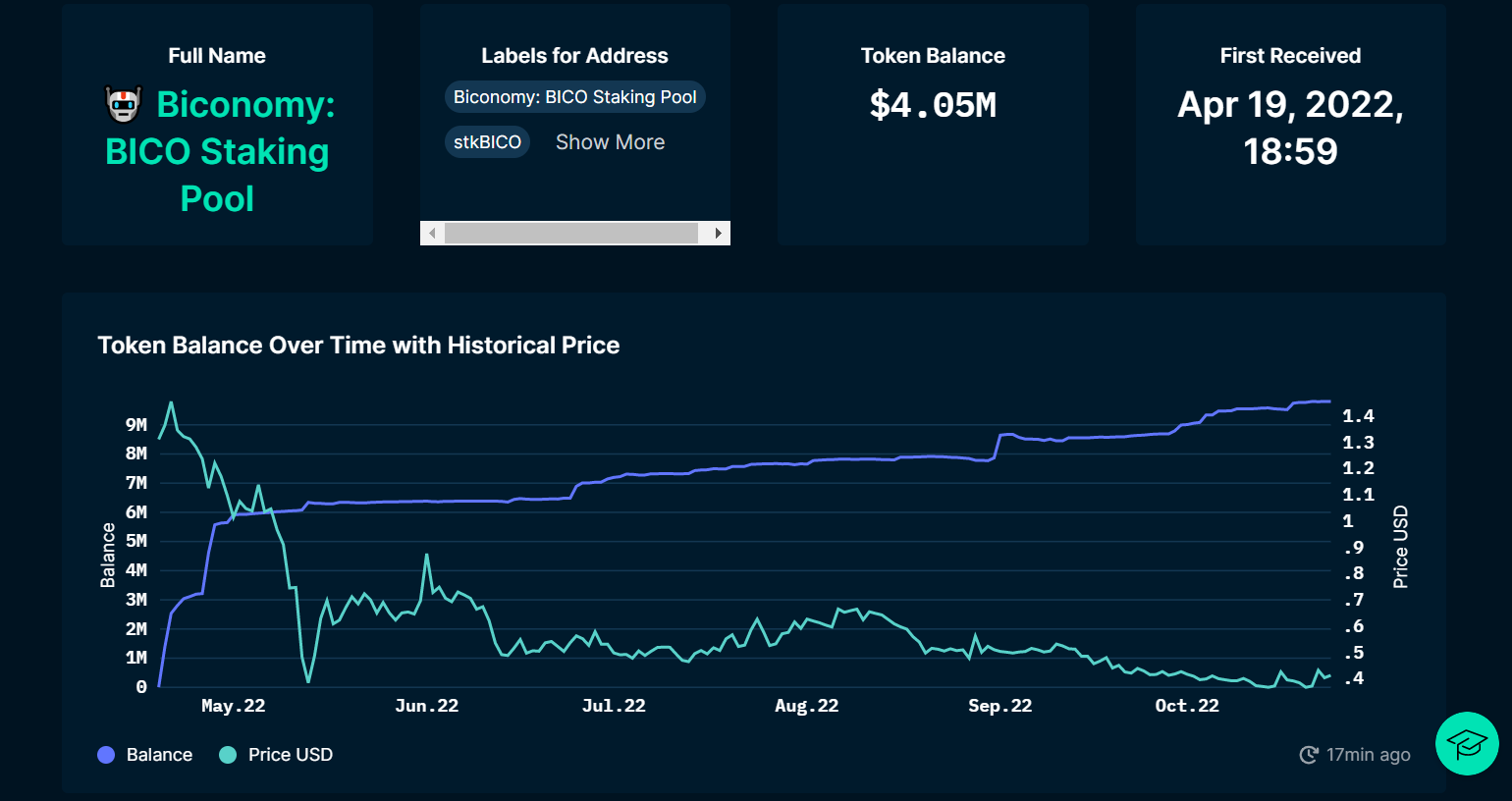
In terms of exchange data, this week there was a large amount posted on Binance and Okex, specifically 420k and 120k.
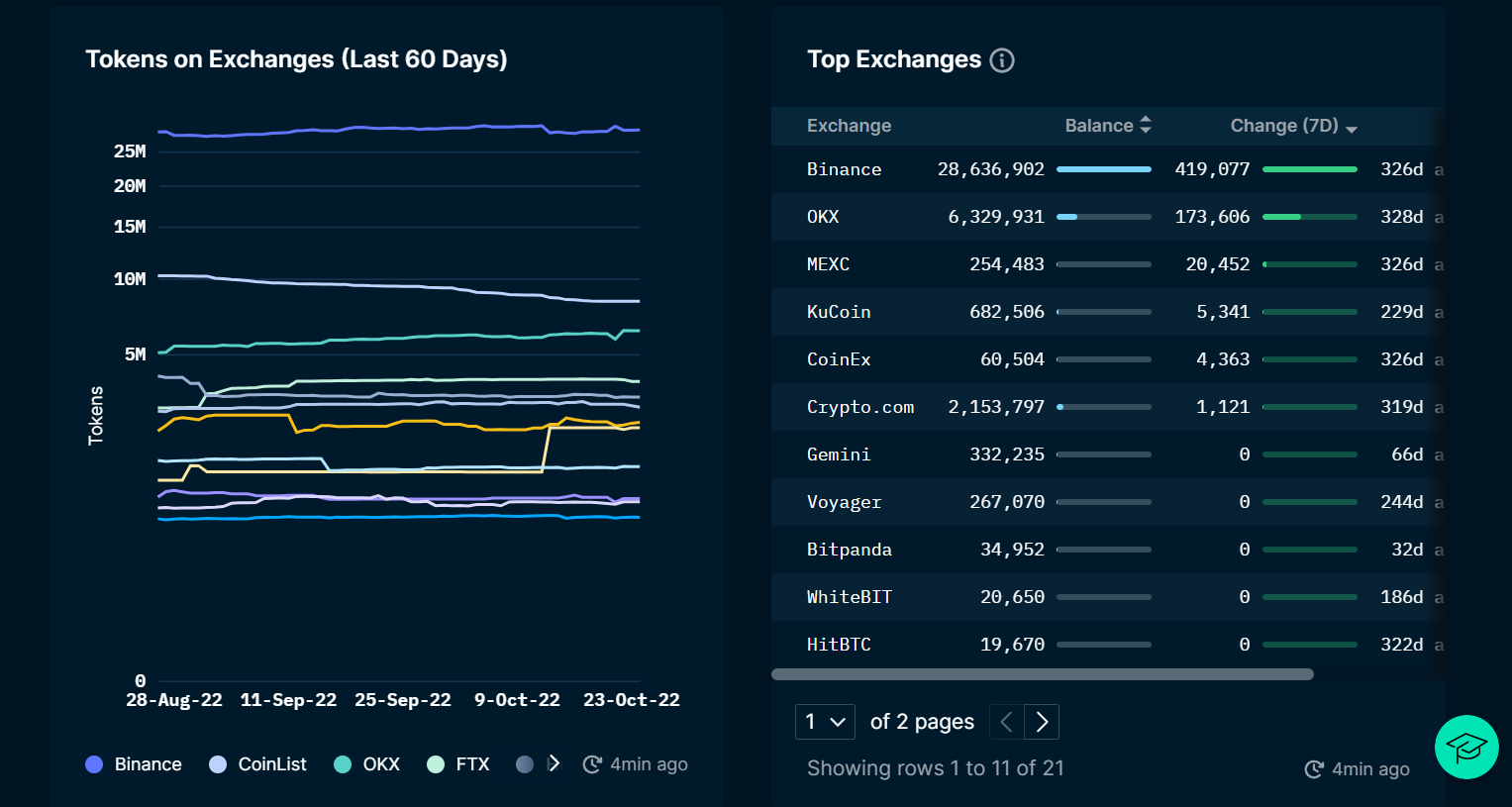
This comes from an ETH Millionaire wallet that is continuously depositing tokens on the exchange after receiving them from other personal wallets within a week now.
Especially, this wallet has put into Binance Deposit accounts of 2 major Market Makers, Jump Trading and Wintermute.
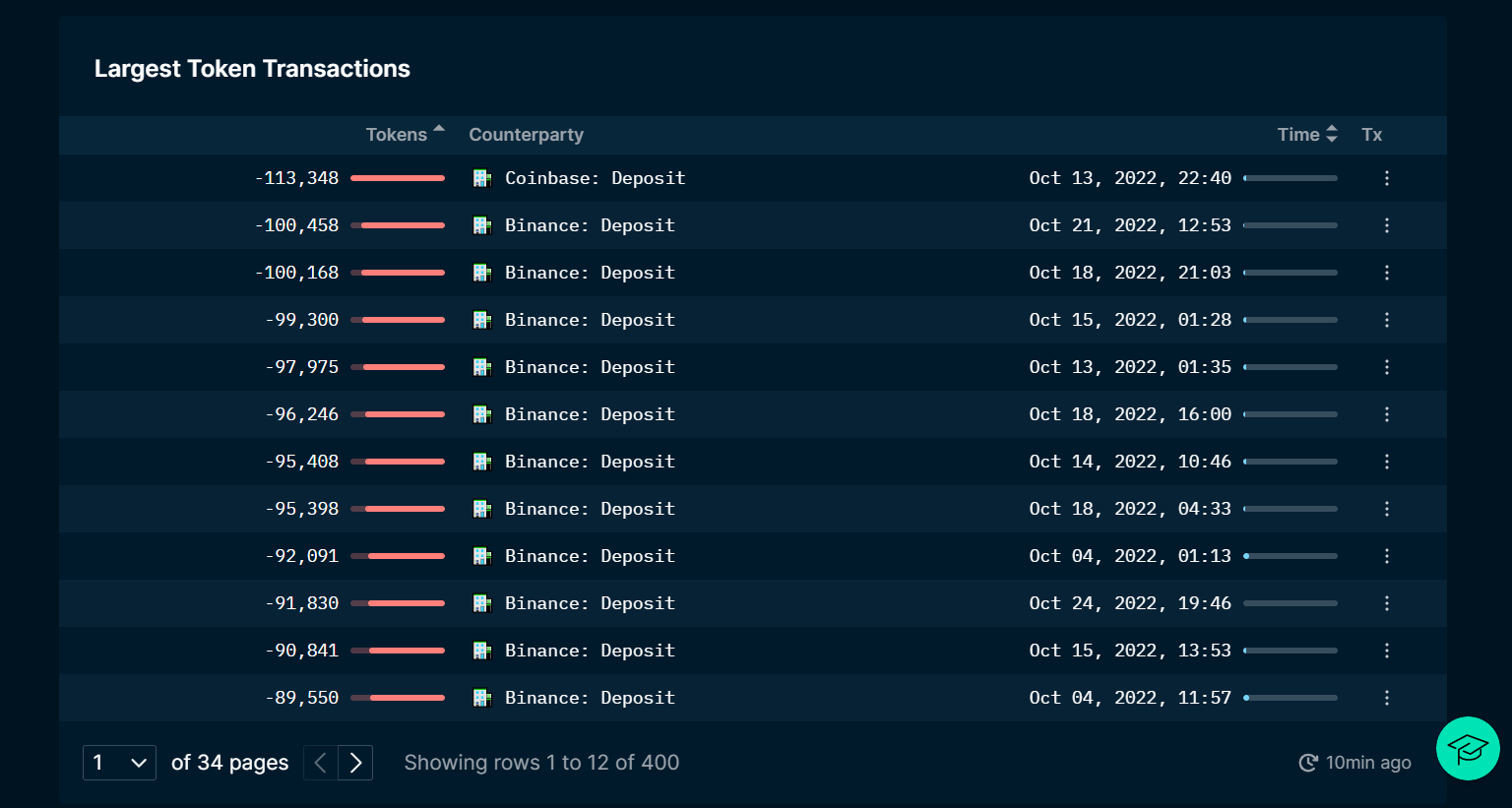
More positively, about vesting tokens, Nerd observed a number of large claim wallets still holding.
For example, a High Balance wallet is holding 1.2 million BICO ($509k) from the September unlock. A Multisig wallet, although in the first two weeks of September deposited immediately to Binance after receiving it, until now decided to intend to hold. Currently, the wallet has 725k BICO ($271k).
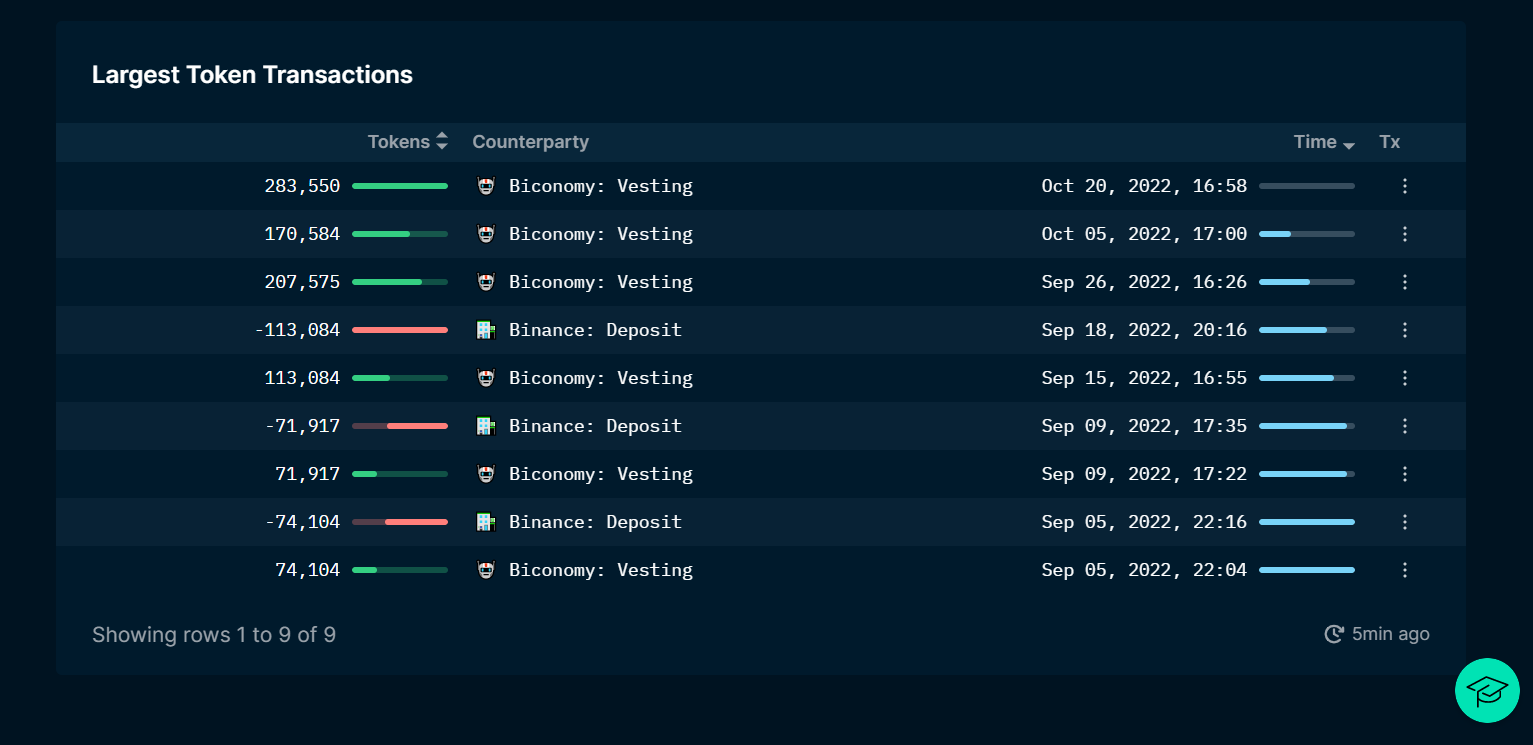

The Vesting wallets still hold about 70% of the tokens. This means that the current circulation is still only about 30% of the total supply. According to the token payment schedule, $BICO will still have a lot of inflation in the future.

Summary
Thus, it can be seen that Biconomy provides solutions to help simplify the cumbersome steps inherent in blockchain and save more transaction costs, thereby scalability and easy access to new customers. However, the current Biconomy token is not good when the token has not had many use cases and there is still a large amount that has not been released on the market, so there is a potential for selling. It will take about 1-2 years, when web3.0 develops in combination with unlocking most of the tokens, $BICO can be invested because the demand at this time is relatively high.




